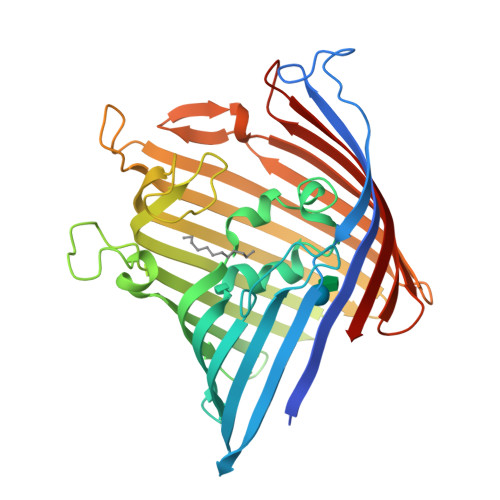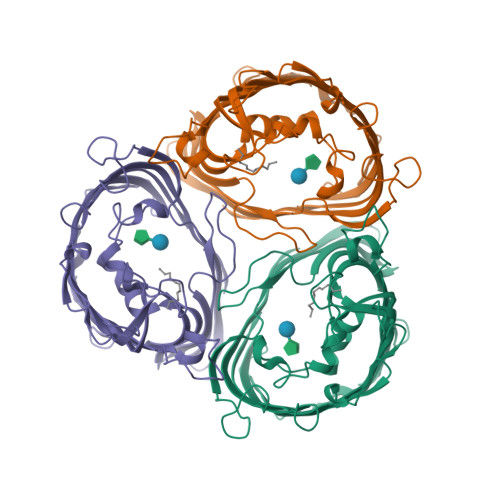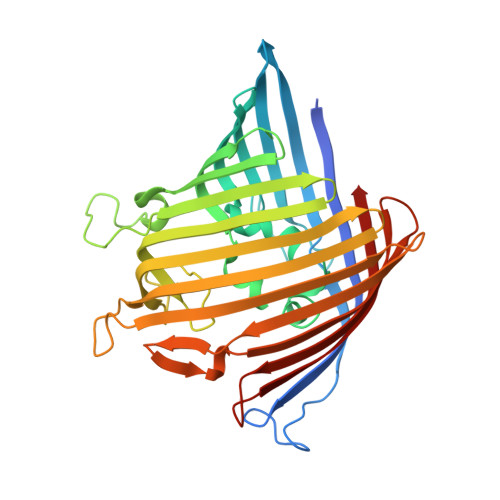Structural basis for solute transport, nucleotide regulation, and immunological recognition of Neisseria meningitidis PorB.
Tanabe, M., Nimigean, C.M., Iverson, T.M.(2010) Proc Natl Acad Sci U S A 107: 6811-6816
- PubMed: 20351243
- DOI: https://doi.org/10.1073/pnas.0912115107
- Primary Citation of Related Structures:
3A2S, 3VZT, 3VZU, 3VZW - PubMed Abstract:
PorB is the second most prevalent outer membrane protein in Neisseria meningitidis. PorB is required for neisserial pathogenesis and can elicit a Toll-like receptor mediated host immune response. Here, the x-ray crystal structure of PorB has been determined to 2.3 A resolution. Structural analysis and cocrystallization studies identify three putative solute translocation pathways through the channel pore: One pathway transports anions nonselectively, one transports cations nonselectively, and one facilitates the specific uptake of sugars. During infection, PorB likely binds host mitochondrial ATP, and cocrystallization with the ATP analog AMP-PNP suggests that binding of nucleotides regulates these translocation pathways both by partial occlusion of the pore and by restricting the motion of a putative voltage gating loop. PorB is located on the surface of N. meningitidis and can be recognized by receptors of the host innate immune system. Features of PorB suggest that Toll-like receptor mediated recognition outer membrane proteins may be initiated with a nonspecific electrostatic attraction.
Organizational Affiliation:
Department of Pharmacology, Vanderbilt University Medical Center, Nashville, TN 37232-6600, USA.





















